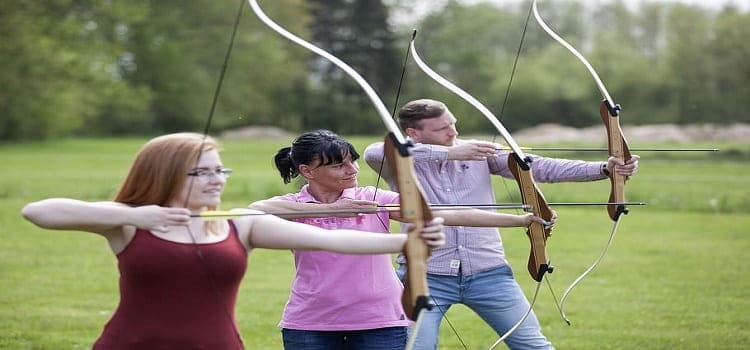Stringing a bow is one of the most basic skills of Recurve bow archery. Moreover, removing the bowstring while storing enhances the life of both the bow and the bowstring. If you are using a bow that can be disassembled, then make sure to string it before storing it. If you are just a beginner and wondering how to string a recurve bow, don’t worry at all!
Any local bow archery shop in your area will show you how to remove and replace your bowstring without causing any damage. If you prefer to do things on your own, the instructions below can easily serve as a guide.
With the right tools, stringing your bow is like a breeze. If you are not interested in whacking yourself with the limbs of your bow, you’ll need to pay attention and exercise caution. After stringing the bowstring you can start using it for action. But if it’s your first time as a bowhunter, tuning it will assist you a lot and make things easy for you.
Contents
Step-by-Step Guidelines for Stringing a Recurve Bow
When you first start taking your recurve bow archery lessons, the very first thing you should do is how to string a recurve bow. It is no wonder that some recurve bows are in the chart of all-time best hunting bows. But you know that recurve bow is a little out of fashion due to the emergence of the compound bow. So it’s hard to get a proper learning method about recurve bow around you.
Today, you will learn the step-by-step procedure of stringing a recurve bow. Though it can be done in several ways, we will show you the safest way. Using a “Stringer” is the safest way to accomplish the job. Still, you have to be careful and cautious!
String Your Bow with a Stringer
A stringer is a relatively inexpensive instrument that is absolutely essential for stringing your recurve bow without injuring the bow limbs. Choose one that is specially made for recurve bows and has got appropriate measurements for the draw weight and length of your bow. It’s important to make sure that the stringer’s ends fit securely over the limb tips of your bow.
Set-up the Bow
Install the limbs of a three-piece bow as recommended by the manufacturing company. This is something that your local archery store can assist you with. After that, look for the string loop on the top. The top loop is larger than the bottom loop, so you can easily identify the difference between them. The top loop should be slid down the top limb. Then, on the lower limb, insert the bottom loop into its string notches. The string notches should be towards the tips within each limb. The bowstring is held in these separate notches.
Put the Stringer
Begin attaching the bow-stringer to the top limb in the same way you did the bowstring. Place the bow-“saddle” on the stringer’s tip directly beneath the string loop over through the limb. Because the saddle end is bare and flattened, it sits flat on the bow limb.
Then, wrap the pouch end around the bottom limb tip to secure the ends. The pouch tip is capped to keep the bow’s tip secure. Now, it’s time to string your bow.
String the Bow
With both of your feet approximately shoulder-width distant, stand onto the bow-stringer. To bend the limbs of the bow, grab the grip and draw straight up. As you put the bottom string ring into the wing tip’s string notches, the bow-stringer would sustain the bow’s pulling tension.
If you are a beginner-level bowhunter, this phase may appear terrifying to you. But after practicing sometimes you will definitely start doing well. But Keep these important facts in mind too. Facts like- How will you know that you’ve flexed the bow sufficiently? Are you certain that it will be alright for you to step atop the bow-stringer? Then you can easily consult an archery store in your area. How to securely and effectively string a bow will be demonstrated by the experts of the store.
Check if the Bow is Doing Good
Disconnect the bow-stringer after the upper string loop is in place. As you turn the bow away from you, the limbs should be facing away from you as well. This precautionary step should be taken because it will be the exact position you’d use to fire your bow. If the thread comes loose from a limb, the limbs will fall outward and far away from you as if they had never been tied. Consult a local archery store if this process causes you anxiety. They can show you how to do it and make sure the strings are in the correct place.
Finally, double-check that the string is securely fastened in each of these string notches. Your bow has been strung and is now ready to use.
Conclusion
You’re almost ready for a full day of hunting camp as now you know how to string a recurve bow. Visit any archery store to get a bow and a bow-stringer and you are good to go! Bow-stringers can be easily found in any archery shop and they also come in a variety of styles. However, they all do the same thing more or less. They assist the bowhunters in flexing their bow, making it simpler to put the string in the right place.
If you still got any confusion, consult any archery shop in your area before attempting to string the bow. They will be able to answer all of your questions and resolve any concerns you may have.


